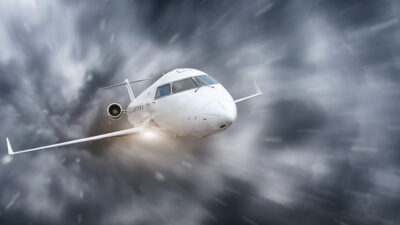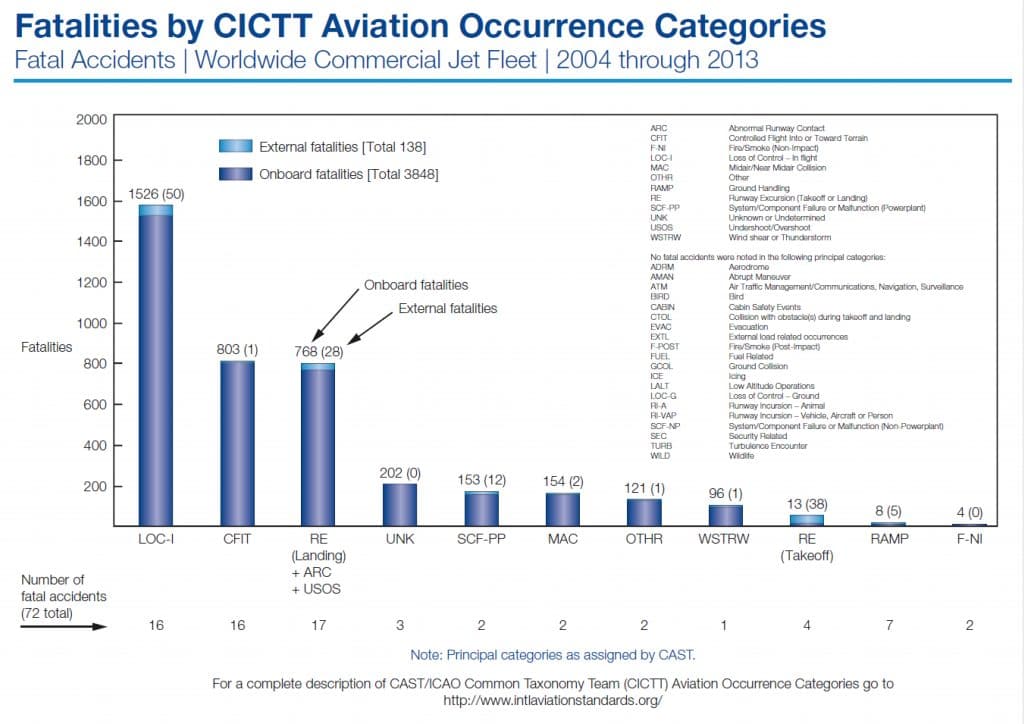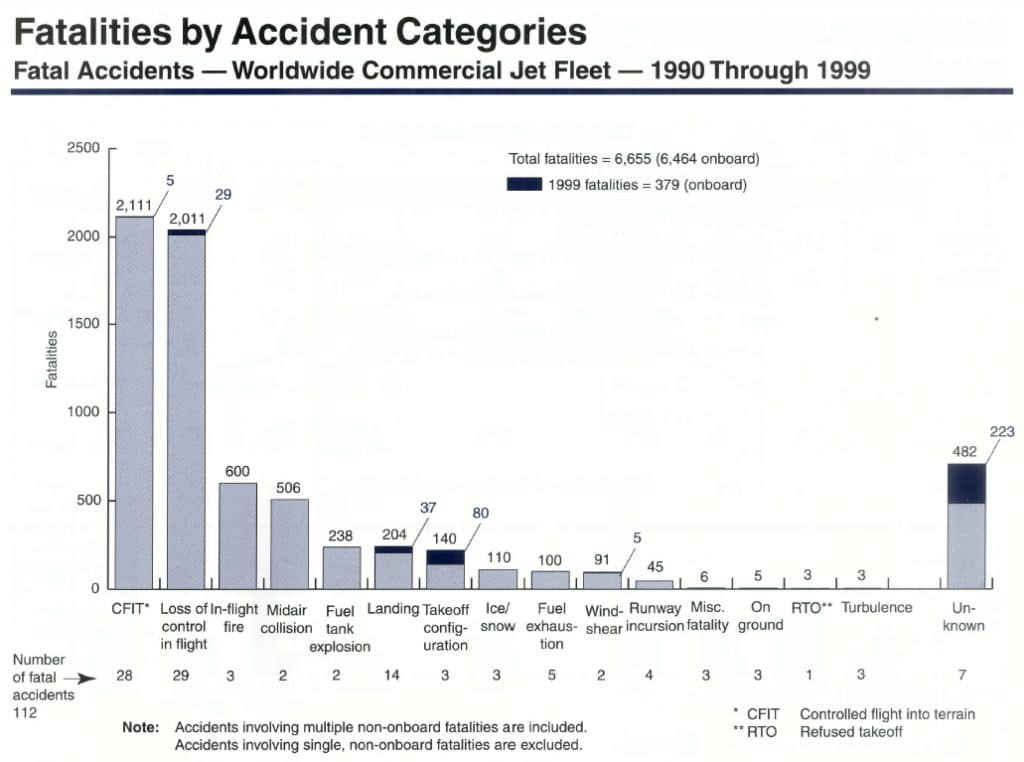Upset Recovery Training Crucial to Addressing Loss of Control

Air Asia 8501 looks to be another data point painting the ugly picture of the Loss of Control problem in the commercial jet aviation industry. The final report is not expected until August 2015, but preliminary data suggests that the Airbus 320-200 climbed excessively before the crash during stormy weather. This upset began a sequence of events that ended with the loss of the aircraft and the tragic death of all 162 people aboard.
Loss of Control in Flight, or LOC-I, is consistently the single deadliest category of aircraft accidents affecting commercial jet aviation. According to Boeing’s annual report on jet accidents, controlled flight into terrain (CFIT) used to rival with LOC-I for that distinction. As new technologies develop, like enhanced ground proximity warning systems (EGPWS), CFIT deaths have been on the comparative decline since the turn of the century. As of yet, there is no silver bullet technology identified to address the LOC-I problem. Automation technologies that were designed in part to help reduce the impact of human error have subsequently induced new risks and hazards. Air France 447 is a startling example of how state of the art automation can lead pilots astray. So, what can be done to address this LOC-I problem? A look into another cause of commercial jet accidents that has been effectively reduced may shed some light.
Prior to 1985, there was no mandatory microburst flight training for commercial pilots. That was the year Delta Flight 191 crashed on approach into Dallas, killing 138 people and destroying the Lockheed TriStar. The NTSB credited local microburst activity as the cause for the crash and as a result, the FAA mandated microburst flight training based on the recommendations of the NTSB. Any pilot who has recently completed an FAA jet type rating is familiar with the appropriate maneuvers for microburst encounters. The most recent U.S. jetliner crash accredited to microburst was US Airways Flight 106 in 1994, more than 20 years ago. According to the Flight Safety Foundation, from 1986 to 2008, the number of fatalities in the U.S. accredited to microburst activity decreased by 93%. However, it is always difficult to distinguish between correlation and causation because there was also significant progress made in microburst prediction technology at this time. Even so, the training seems to have had a profound impact on the problem.
Boeing publishes a study every year breaking out large commercial jet accidents, the most recent released last year is titled, “Statistical Summary of Commercial Jet Airplane Accidents Worldwide Operations 1959 – 2013.” The graph below categorizes a decade of large commercial jet accidents. This graph clearly displays how prominent the LOC-I category is, especially compared with weather related causes. Copied below is the same graph of commercial jet accidents from the 90s, when the last U.S. airliner microburst accident occurred. Most notable is how prominent CFIT was before technology improvements such as EGPWS. Again, the weather related accidents are minor compared with LOC-I.
The FAA-mandated training improvements in regards to microbursts seem to have made a profound difference. The myriad of causes leading to LOC-I accidents are diverse and complex. There is not one maneuver a pilot can practice. However, recent events and historical data indicate that wide reaching training in regards to LOC-I could have an even more significant impact on commercial jet fatalities, based on the consistently high number of LOC-I related fatalities. Advanced maneuvering / upset recovery training (AM/URT or just URT), is pilot training designed to help address the LOC-I threat. Quality and approach varies greatly, but multiple studies have shown high quality URT to be effective in preparing a pilot to better handle upsets.
While the URT conversation seems to be gaining momentum of late, it is still a relatively small percentage of commercial pilots who receive upset training. Largely as a result of the Colgan Air accident in Buffalo in 2009, the FAA has mandated part 121 operators to provide pilot upset training by 2019, but wider spread upset training outside of airline operations is still only recommended. Additionally, advanced maneuvering training via ground based simulator has been problematic in terms of realism and has been found contributory in at least one deadly airline accident, AA 587. Some insurance companies are attempting to address the problem of access to high quality upset training by incentivizing URT. Global Aerospace is planning to continue in 2015 with a unique program designed to provide a comprehensive Upset Recovery Training course, which includes actual in-flight simulators, to Global Aerospace customers. This commitment to safety is one way to help affect the economics of the training for flight departments.
Ironically, the upset that seems to have downed Air Asia 8501 looks to have been weather related–the stormy weather either affected the airplane or the pilots. Regardless of the upset cause, upset recovery training may have given the pilots the tools to safely fly out of the upset. Be it FAA mandates, insurance incentives, or another vehicle, providing those tools via AM/URT to large numbers of commercial jet pilots seems to be a necessary part of the solution to address the deadly problem of loss of control in flight.

Calspan Aerospace has been providing research and testing services in the aviation and transportation industries for over 70 years. Calspan’s Advanced Maneuvering & Upset Recovery Training (AM-URT) program provides the most genuine and technically advanced upset training experience available specifically designed for commercial jet pilots. Their curriculum is derived from real-world aviation accidents presented in a completely safe airborne simulation environment. Calspan’s training methods are based on 14 years of government and industry sponsored research and focus on the most effective upset recovery techniques. The training includes classroom instruction and in-flight training in unique Learjet In-Flight Simulators.
http://www.calspan.com
© 2024 Calspan Aerospace. All Rights Reserved.
Next ArticleRelated Posts

Understanding the Challenge of Turbulence-Related Injuries in Business Aviation
The challenge of managing air turbulence in business and private aviation is becoming increasingly evident due to the growing number of turbulence-related incidents affecting aircraft operators across the industry.

Leadership, Management and Safety: Embracing Compliance and Conformance Oversight
Aviation operations, and by default, safety, are based on the idea that regulatory requirements are fundamental to establishing a framework to achieve safe operations.



